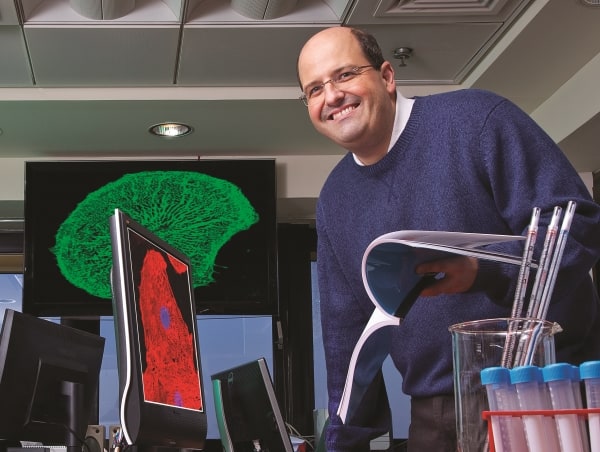Researchers from Israel and Canada have obtained promising results from an experimental pacemaker made from natural human cells, and believe this system may overcome drawbacks of electrical pacemakers. The team used cells called sinotrial (SA) node pacemaker cells, which make up the natural pacemaker system in the heart.

The sinotrial node initiates the electrical signal that causes the muscles of the heart to contract. Dysfunction in the cells of this node leads to slow and irregular heart rate, and sometimes to heart failure and even death; electronic pacemakers mimic the node’s action by sending electrical signals to electrodes implanted into the muscle, but are subject to the many side-effects of implantation surgery, including risk of infection; lack of sensitivity to hormone signals that would normally adjust the heart rate; moreover, they need to be powered by batteries with limited life, and are not suitable for children whose hearts are still growing.
The Israeli team from Technion (the Israeli Institute of Technology) and Rambam University Hospital in Haifa included specialists in developmental medicine, and working with experts from the University of health Network’s McEwan Centre for Regenerative Medicine in Toronto, has devised a protocol for ensuring that embryonic stem cells differentiate into sinotrial node pacemaker cells. “The pacemaker generated from embryonic stem cells exhibits the molecular, electrical and functional properties characteristic of human pacemaker cells,” said Prof. Lior Gepstein of Technion, who specialises in repairing heart defects with stem cells. “It is an effective and promising alternative to natural pacemaker cells in the event of their dysfunction.”
Prof Gepstein’s laboratory carried out experiments on rats, using the biological pacemakers. In the journal Nature Biotechnology, the team describes how six of the seven subjects had a normal heart rhythm restored after implantation of the embryonic cells. “Together with our Canadian partners, we present a method for producing a population of pure pacemaker cells and, and give proof that they work well as a substitute for natural pacemaker cells that have been damaged,” Gepstein said. “This development is significant both in terms of research – because it will enable scientists to study the heart in new ways, and in practical terms – since we are presenting an ‘assembly line’ here for an unlimited reservoir of pacemaker cells to treat patients with heart rhythm problems.”




Swiss geoengineering start-up targets methane removal
No mention whatsoever about the effect of increased methane levels/iron chloride in the ocean on the pH and chemical properties of the ocean - are we...